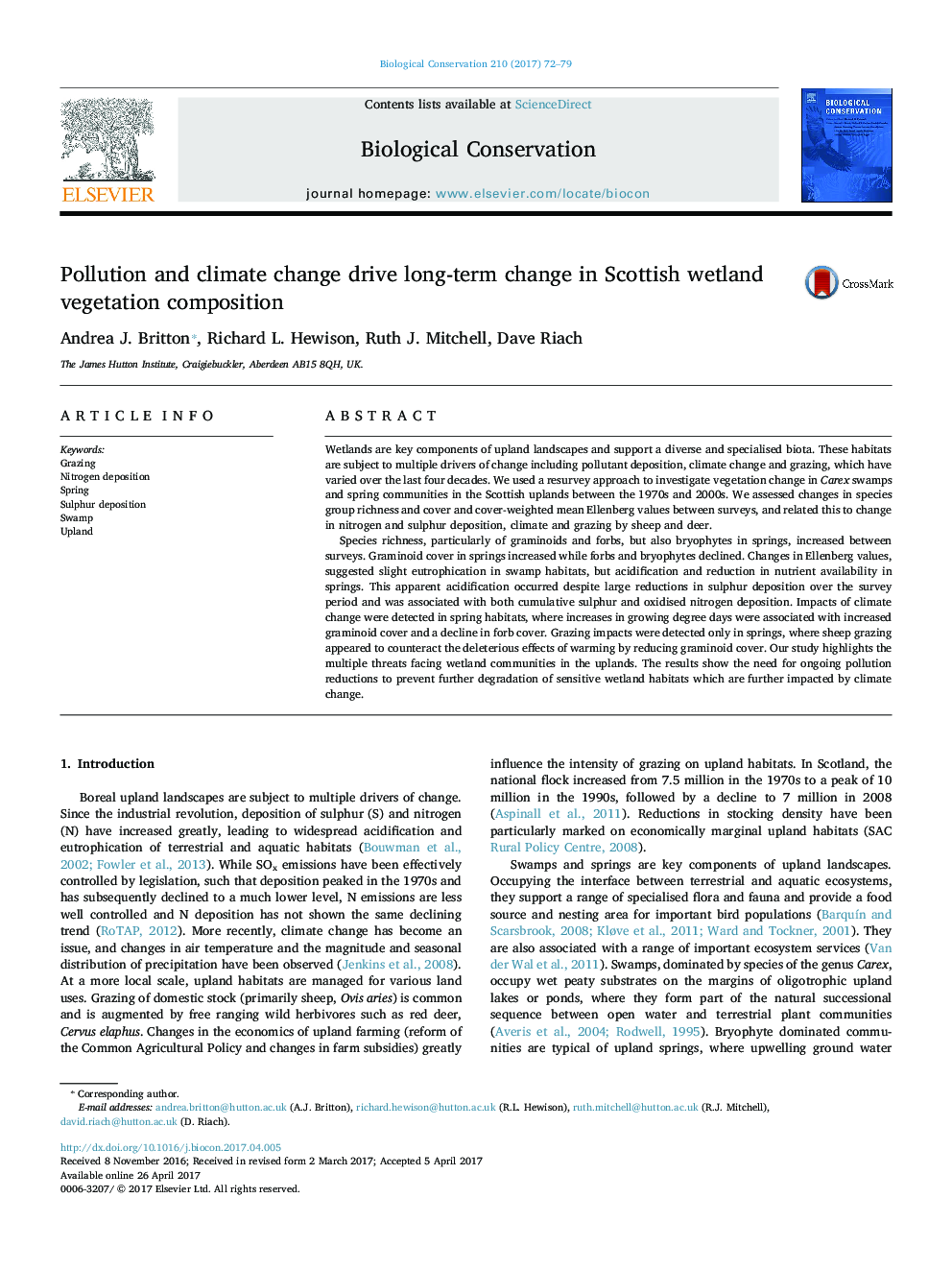| Article ID | Journal | Published Year | Pages | File Type |
|---|---|---|---|---|
| 5743207 | Biological Conservation | 2017 | 8 Pages |
Wetlands are key components of upland landscapes and support a diverse and specialised biota. These habitats are subject to multiple drivers of change including pollutant deposition, climate change and grazing, which have varied over the last four decades. We used a resurvey approach to investigate vegetation change in Carex swamps and spring communities in the Scottish uplands between the 1970s and 2000s. We assessed changes in species group richness and cover and cover-weighted mean Ellenberg values between surveys, and related this to change in nitrogen and sulphur deposition, climate and grazing by sheep and deer.Species richness, particularly of graminoids and forbs, but also bryophytes in springs, increased between surveys. Graminoid cover in springs increased while forbs and bryophytes declined. Changes in Ellenberg values, suggested slight eutrophication in swamp habitats, but acidification and reduction in nutrient availability in springs. This apparent acidification occurred despite large reductions in sulphur deposition over the survey period and was associated with both cumulative sulphur and oxidised nitrogen deposition. Impacts of climate change were detected in spring habitats, where increases in growing degree days were associated with increased graminoid cover and a decline in forb cover. Grazing impacts were detected only in springs, where sheep grazing appeared to counteract the deleterious effects of warming by reducing graminoid cover. Our study highlights the multiple threats facing wetland communities in the uplands. The results show the need for ongoing pollution reductions to prevent further degradation of sensitive wetland habitats which are further impacted by climate change.
